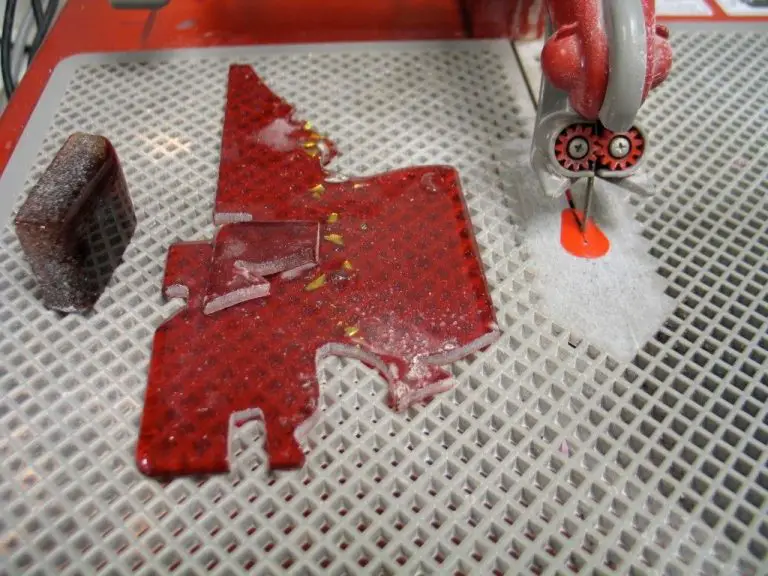What Is Metal Enameling?
Metal enameling is the art of decorating metal objects, such as copper, silver, or gold, with colored glass that is fused to the surface using high heat. The glass powder melts and fuses with the metal to create a smooth, durable decorative coating.
The origins of enameling date back over 3,500 years to ancient Mesopotamia and Egypt. Archeological evidence shows the earliest enamels were applied to gold jewelry and vessels. Over the centuries, the art spread to China, the Middle East, and Europe. Enameling techniques further developed during the Medieval and Renaissance periods. By the 19th century, enamel art saw a revival across Europe.
Today, enameling remains a popular decorative art around the world. Artisans use specialized tools and kilns to fuse fine layers of molten glass to metal. The glass can be transparent, translucent, or opaque. A range of artistic effects can be achieved by layering different colors and textures.
Materials Used
The most common metals used in enameling are copper, silver, and gold. Iron, steel, aluminum, and titanium can also be enameled but require special treatment to prevent oxidation at high temperatures. The metal surface must be thoroughly cleaned before applying enamel.
Enamels are made from powdered glass mixed with coloring oxides and sometimes opacifiers. The powder melts and fuses with the metal substrate when fired in a kiln. There are many different types of enamels available such as transparent, opaque, and opalescent. The choice depends on the desired effects. According to the Enamel Workshop, some popular enamels are Thompson Enamels and Fusion Glass Enamels.
Tools used in enameling include kilns, trivets, sifters, mullers, engraving tools, and specialized pliers. Kilns allow heating enamels to about 1000-1600°F to fuse them onto metal. Trivets hold pieces in the kiln. Sifters and mullers help apply even layers of enamel. Engraving tools create recesses, channels and textures. Pliers like tweezers aid in placing fine wires or metal pieces.
As mentioned in the article “Enameling 101” on The Crucible website, it’s important to use quality tools and follow safe practices when enameling.
Techniques
There are several main techniques used in metal enameling:
Cloisonné involves creating cells by soldering thin strips of metal to the surface of the metal piece and then filling the cells with powdered glass enamel. The cells help contain the enamel when it melts during firing. This technique allows for very intricate and detailed designs.
Champlevé is when cells are carved out of a metal surface to hold the enamel. The cells are created by engraving or etching into the metal. The enamel fills these carved out depressions.

Plique-à-jour uses unsupported cells of enamel, usually surrounded by a metal wire framework. The enamel appears to be suspended in air, allowing light to pass through it. This technique is very difficult and intricate.
Other techniques like basse-taille, ronde-bosse, and grisaille add more variety and depth to metal enameling. Contemporary artists continue to innovate with new mixed media techniques as well.
Process
The process of creating a metal enameled artwork involves several key steps:
1. Prepare the metal surface. This involves cleaning and degreasing the metal so the enamel will properly adhere. Common methods include using a rotary tool to abrade the surface or chemically cleaning with solutions like vinegar or ammonia. (Source)
2. Apply a layer of flux. Flux helps the enamel bond to the metal surface. It can be applied by brushing or dipping the metal into a flux solution. Common fluxes include gum tragacanth, Klyr-Fire, and Enamelast.
3. Sift a layer of enamel powder over the fluxed surface. Use a sieve or small holes punched in cardstock to ensure an even layer. Tap off any excess.
4. Fire the enameled piece in a kiln until the powder melts and fuses with the metal, usually around 1400-1600°F. The firing time depends on the thickness of the enamel layer.
5. Allow the piece to cool slowly and anneal in the kiln. Fast cooling can cause cracks or crazing in the enamel.
6. Repeat steps 3-5 to build up layers of enamel for more color depth and dimension. Firing multiple thin layers prevents flaws.
7. Optionally, refine details by adding fine lines or patterns on top of the base using specialized enameling tools before a final firing.
8. After firing, clean the piece with soap and water or a chemical bath to remove any remaining flux before use.
Notable Artists
Metal enameling has been practiced as an art form for centuries, with many influential artists advancing the craft over time. Some of the most notable metal enameling artists include:
Peter Carl Fabergé (1846-1920) was a Russian goldsmith best known for the famous Fabergé eggs, which often featured enameled surfaces. Fabergé led the House of Fabergé jewelry company, which produced exquisite enameled objects for the Russian Tsars.
Alexander H. Riechers (1827–1905) gained fame for his finely detailed portrait miniatures on enamel. Riechers revived the art of enameling and blazed new techniques like plique-à-jour.
Georges Fouquet (1862-1957) was a French jeweler who pioneered the Art Nouveau style. Fouquet created lavish jewelry combining enameling, gems, and gold in fluid organic forms.
Peter Carl Fabergé, Alexander H. Riechers, and Georges Fouquet helped elevate metal enameling from a decorative craft to a high art form (according to The Art of Enameling – Arthive). Their mastery of technique and innovative artistry left a lasting influence.
Contemporary Works
Metal enameling continues to evolve as a contemporary art form. Artists are finding innovative ways to use this ancient technique to create modern masterpieces. Here are some examples of groundbreaking contemporary enameled artworks:
Tabula Rasa by Cristina Iglesias features large enameled steel panels with abstract relief textures and patterns. The artist experiments with the liquid glass medium to reflect themes of memory and the subconscious.
Fluxus Vitrail by Vladimir Tsivin fuses metal enameling with neon lighting effects. Tsivin crafts enameled glass panels that illuminate from within to create a stunning visual spectacle.
Biomorphism Series by KilnGoddess fuses enameling with 3D printing. The artist 3D prints biomorphic shapes then applies enamel in vivid colors to create futuristic nature-inspired artworks.
Contemporary enamelists are pushing the boundaries of this traditional medium through innovative new techniques, unusual color combinations, mixed media, and fresh conceptual approaches. These unique artworks demonstrate the limitless creative potential of metal enameling.
Uses of Metal Enameling
Metal enameling has many decorative and functional uses, particularly in jewelry, glass art, and household objects. The durability and color vibrancy of enamels make them ideal for enhancing jewelry like brooches, rings, bracelets, necklaces, and more. Jewelers can use various enameling techniques like cloisonné, champlevé, and plique-à-jour to create colorful designs on metals like copper, silver, and gold.
Enamels are also often applied to glass objects like vases, plates, bowls, and stained glass to add color and decoration. The luminous, glass-like finish produced by enameling has long made it a popular technique for embellishing blown glass pieces. Enamels can also be applied to other household objects like boxes, candlesticks, handles, and decorative ornaments to add durability, color, and beauty.
Beyond jewelry and decorative arts, enameling has some functional applications as well. Enamel coatings provide protection against corrosion and wear on metal objects. Historically, enamels were used to coat cooking pots and eating vessels to prevent rusting and make them easier to clean. Enamels can also provide insulation on electrical wiring and resistance to chemical corrosion on industrial equipment. While largely decorative today, metal enameling originated from the need to improve the durability and longevity of metal objects.
Source: https://www.thecrucible.org/guides/enameling-6/
Challenges
Metal enameling involves many difficult aspects that present challenges for artists. Some key challenges include:
Applying enamel evenly and avoiding uneven thicknesses which can lead to cracking and chipping. As noted on the Common Enameling Problems/Fixes page, “Enamel cracks or pings off Possible causes: 1) Enamel applied too thickly, and/or unevenly…” (https://www.enameling.com/PDFs/Common%20Enameling%20Problems.pdf)
Proper counter-enameling on the backside to prevent warping and cracking from uneven heating and cooling. Per the Common Enameling Problems/Fixes page, lack of counter-enameling can result in cracking and loss of enamel.
Keeping the metal surface clean before applying enamel, as dirt can prevent proper adhesion. The Enameling Safety Issues You Should Know About article notes that “The metal must be free of all oils, dirt, etc. for good enamel adhesion.” (https://www.ganoksin.com/article/enameling-safety-issues-know/)
Avoiding overly intricate shapes and designs that increase cracking and other issues. As the METAL ENAMELING 4H guide states, “Elaborate or intricate shapes of copper contribute little to the total effect of an enamel piece and actually may cause many problems for the novice.” (https://fyi.extension.wisc.edu/wi4hpublications/files/2015/10/4H158.pdf)
Metal Enameling Communities
Metal enameling enthusiasts often join communities to connect with other artists, learn new techniques, and share their work. Some of the most active metal enameling communities include:
The Enamellist Society is a US-based nonprofit organization dedicated to promoting enameling as an art form. They host an annual national conference and provide online resources like video tutorials and webinars (https://www.thecrucible.org/guides/enameling-6/).
Local guilds and studios like Mother Brook Arts in Massachusetts offer enameling classes and open studio time for artists to work together (https://motherbrookarts.org/node/2180). These provide hands-on learning opportunities and a space to collaborate.
Online forums like the Ganoksin Project connect over 19,000 jewelry makers worldwide. Their enameling section has advice for beginners, tips from experts, and galleries to showcase work (https://www.ganoksin.com/article/metals-for-enameling/).
Social media groups on Facebook and Reddit allow enamelists to share their pieces and ask questions in a casual, digital space. These platforms make it easy to get feedback and find inspiration from enameling work worldwide.
Conferences like the annual Enamelist Society Conference and biennial International Enamelling Conference bring together enamelists of all levels. These provide workshops by renowned artists and a chance to exchange ideas.
Local classes at art centers introduce beginners to enameling while providing spaces for more experienced artists to work. Cities often have museums and galleries that exhibit enameling as an art form.
Through in-person and online communities, enamelists can continually refine their craft while promoting enameling as a unique and versatile art medium.
Future of Metal Enameling
The future of metal enameling looks bright as new technologies open up innovative techniques and directions for the artform. Some key innovations include:
3D printing is allowing artists to create more intricate and detailed enamel pieces by printing molds and textures not possible with traditional handcrafting methods. Enamelists can now rapidly prototype designs before enameling. 3D printed textures are also being transferred to metal to create one-of-a-kind surfaces for enameling.
New enamels like waterglass allow firing at lower temperatures, reducing warping and enabling use on more delicate metals like copper and brass. This expands design options. Waterglass also allows larger scale pieces not possible with traditional enamels. Artists are beginning to enamel large architectural and public art using these new materials.
As the technology improves, digital image transfers may allow photographs and complex imagery to be applied to enamel in the future. Some artists are already experimenting with early versions of this technique to push the boundaries of the medium.
Enameling is also moving towards more sustainable practices. New lead-free enamels reduce toxicity hazards. Some companies are developing enamels made from recycled glass to reduce waste. The artform is becoming more environmentally friendly.
While staying true to its handmade appeal, metal enameling is poised to see new creative horizons thanks to digital fabrication and new materials. The ancient technique is evolving with today’s technologies in exciting ways.



